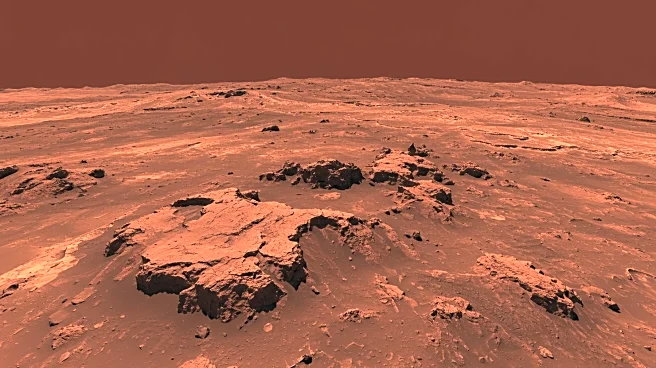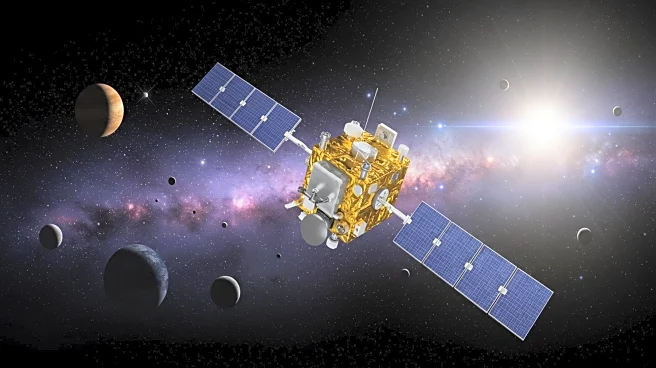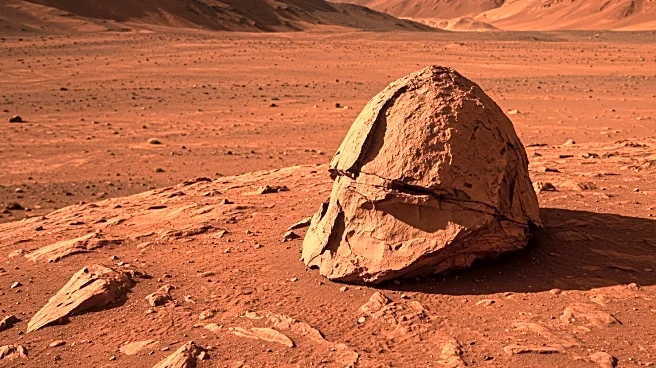What's Happening?
Researchers have developed a new method to estimate the shrinkage of Mercury's radius due to cooling-induced faulting. Historically, estimates of Mercury's contraction have varied widely, ranging from 1 to 7 kilometers. The new approach, devised by Loveless and Klimczak, focuses on measuring the largest fault in the dataset to scale the effect and estimate total shrinkage. This method was applied to three different fault datasets, resulting in estimates of 2 to 3.5 kilometers of shrinkage. When combined with previous estimates of shrinkage from other cooling-induced processes, the researchers concluded that Mercury's radius may have shrunk by a total of 2.7 to 5.6 kilometers since its formation. This research, published in AGU Advances, aims to provide a deeper understanding of Mercury's long-term thermal history.
Why It's Important?
The new method for estimating Mercury's shrinkage is significant as it offers a more consistent and reliable approach compared to previous methods. Understanding Mercury's contraction is crucial for comprehending its thermal history and geological evolution. This research could also have broader implications for studying tectonic processes on other planetary bodies, such as Mars, which feature similar fault structures. By refining the methodology for estimating planetary shrinkage, scientists can gain insights into the cooling and tectonic activity of planets, which is essential for planetary science and exploration.
What's Next?
The researchers suggest that their methodology could be applied to other planetary bodies with fault structures, such as Mars, to investigate their tectonic processes. This could lead to new discoveries about the geological history and evolution of these planets. Additionally, further research may focus on refining the method and applying it to different datasets to enhance the accuracy of shrinkage estimates. The findings could also inform future space missions and studies aimed at exploring planetary geology and tectonics.
Beyond the Headlines
The development of this new method highlights the importance of innovative approaches in planetary science. By focusing on the largest fault in the dataset, the researchers have provided a more stable basis for estimating shrinkage, which could lead to advancements in understanding planetary tectonics. This research underscores the interconnectedness of geological processes across different planets and the potential for cross-planetary studies to enrich our knowledge of the solar system.











